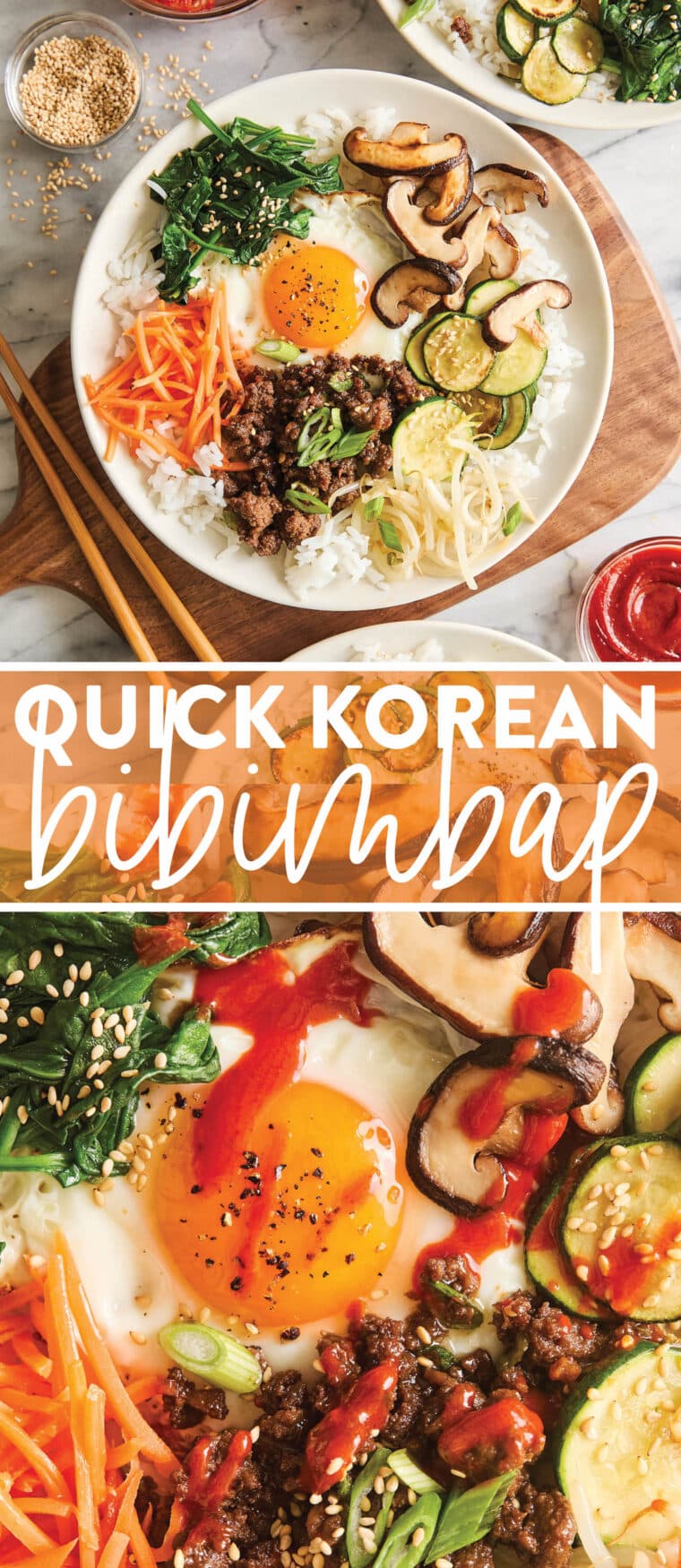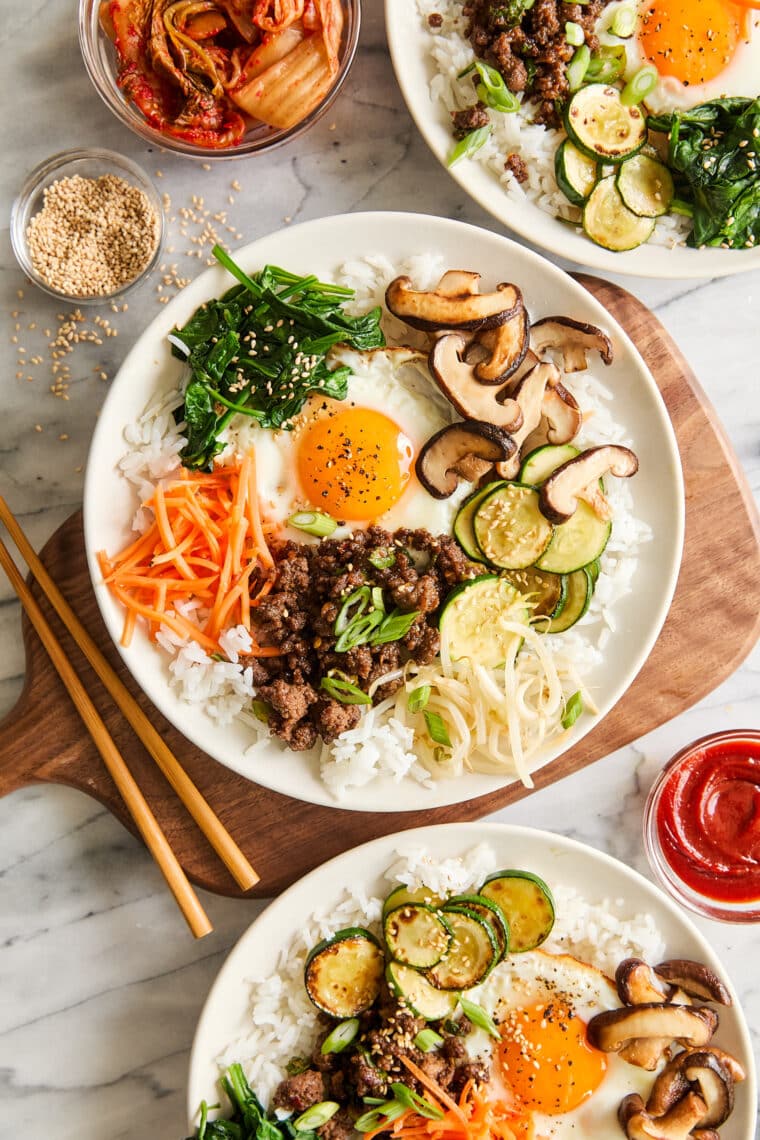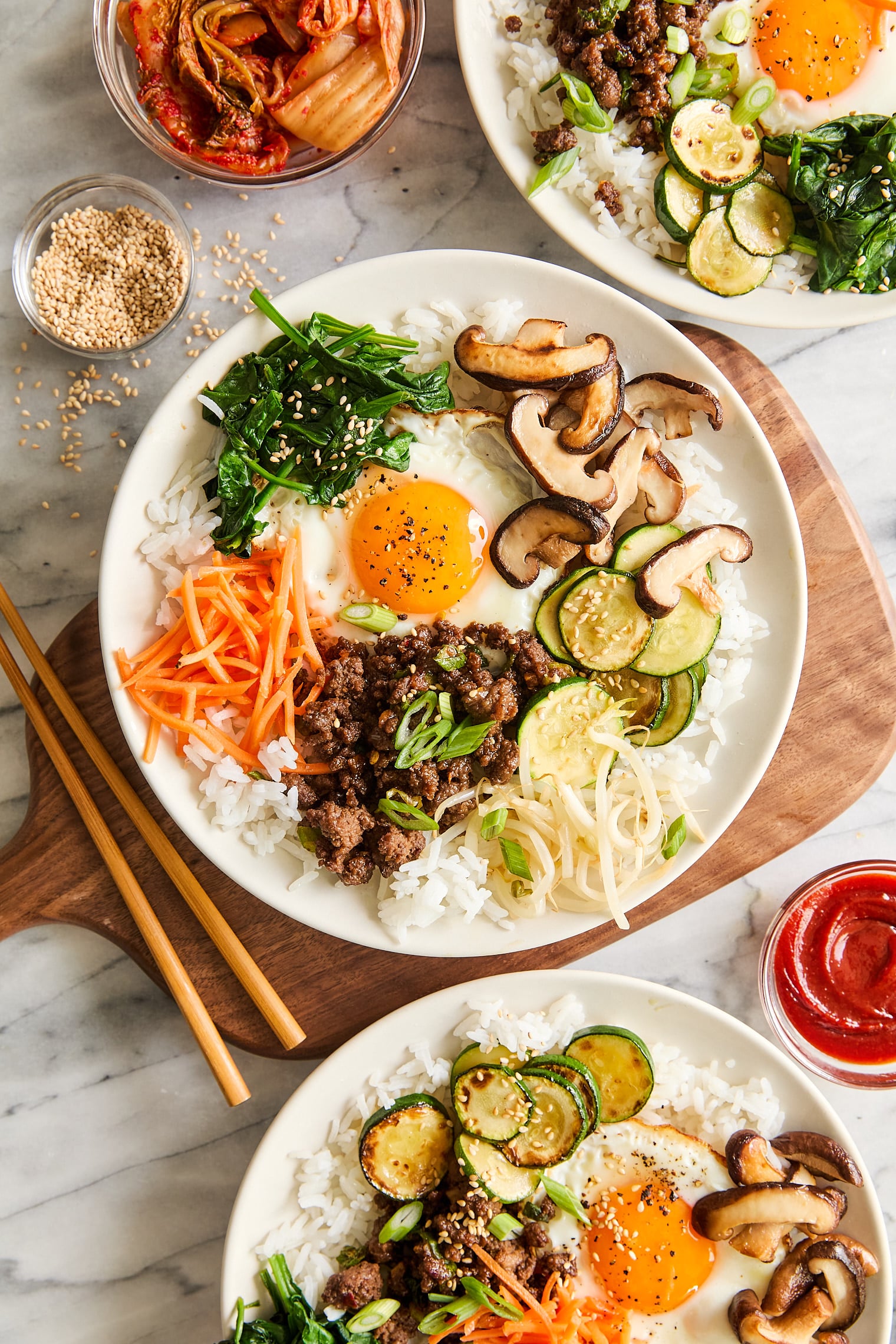Quick Korean Bibimbap (Korean Rice Bowl)
Easy, make-ahead Korean bibimbap! Perfect for quick dinners during the week, and so customizable!

Why I Love This Recipe
- Such an easy recipe. Even though the vegetables are cooked separately, this dish is simple and foolproof, bursting with color, making it perfect for picky eaters.
- Highly customizable. Bibimbap can be tailored to your preferences with various proteins, grains, and vegetables. Want it vegetarian? Just skip the meat and add more veggies!
- Best make-ahead dish. Prep the vegetables in advance for a quick weeknight meal, ideal for using leftover or frozen rice.
- Even better for entertaining. Serve it as a bibimbap bar for guests, allowing them to pick their own toppings!

What Is Bibimbap?
Bibimbap, meaning “mixed rice,” is a popular Korean dish featuring white rice topped with seasoned vegetables, beef, and a fried egg, all drizzled with gochujang (Korean chili paste). Dolsot bibimbap is served in a hot stone pot, creating crispy rice at the bottom.
Key Ingredients
Rice
Short-grain white rice is traditional, but you can substitute sushi rice or even brown rice, quinoa, or farro.
Protein
Traditionally, bulgogi is used. Ground beef, chicken, tofu, and seafood like squid are excellent alternatives.
Veggies
Common vegetables include zucchini, carrots, spinach, bean sprouts, and mushrooms, but feel free to add cabbage, bell peppers, or onions.
Egg
A sunny-side-up egg tops it off, providing a rich texture when mixed in.
Gochujang
Finish with a drizzle of gochujang, sesame oil, and sesame seeds for flavor.
How to Make Shortcut Bibimbap
- Prepare the Korean beef (bulgogi or ground beef).
- Sauté each vegetable separately until tender, seasoning along the way.
- Assemble the bibimbap with rice, beef, vegetables, and a runny egg, keeping everything segmented.
- Drizzle with gochujang and sesame oil, then sprinkle sesame seeds before mixing.
Tips and Tricks for Success
- Cook the vegetables separately. While time-consuming, this preserves the colors and textures.
- Add garlic or ginger. Enhance flavor by adding garlic or ginger when sautéing the veggies.
- Use different veggies. Feel free to swap in any favorite vegetables to make it your own.
- Make ahead of time. Cook veggies up to 3 days in advance, reheating just before serving.
Quick Korean Bibimbap: Frequently Asked Questions
Skip the meat or substitute with tofu!
Toasted sesame oil is richer and nuttier, making it ideal as a finishing oil.
Gochujang is a red chili paste, a staple in Korean cooking, available in grocery stores.
Absolutely! The vegetables can be prepared 2-3 days in advance and stored in the fridge.
Store leftovers in an airtight container in the fridge for 3-4 days.
